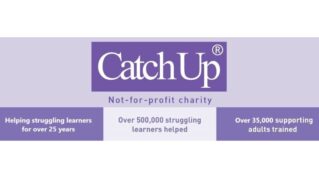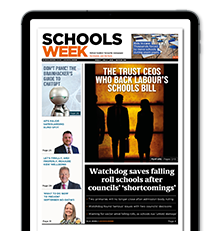Over the last couple of years, discussions around metacognition have become increasingly prevalent in schools. Often oversimplified as ‘thinking about thinking’, metacognition sometimes gets a bad rap as an indulgence or ‘nice to have’, as opposed to a critical part of the teaching and learning cycle.
Instead, it can be more helpful to approach metacognition as a process of planning, monitoring and evaluating our learning.

Although this process is simple enough, it takes time for students to develop understanding and fluency in how this process can allow them to tackle tasks with greater confidence and effectiveness.
Metacognitive approaches comprise many and varied strategies, but one technique stands out amongst all others: using worked models.
Now, teachers use worked models all the time. It’s an important tool that we use to show students what success looks like. But without some consideration, it can be a bit like giving students a picture of a fully assembled piece of furniture without providing the instructions they need to assemble the piece themselves.
Of course, we can take things a step further by deconstructing an exemplar with the class then pulling out the component parts – valuable learning opportunities can be drawn out of doing this.
However, by explicitly explaining our thought processes during deliberate teacher modelling, we give students an important insight into how a subject specialist approaches the task, setting them on their journey from novice to expert.
I’m not exaggerating when I say that narrating my thinking process during live classroom modelling was transformational for me and my students.
As part of my PhD, I designed a study on developing a metacognitive approach to teaching, and students overwhelmingly reported that these explanations were the most useful strategy for helping them understand how to tackle an assessment. This was one year 9 student’s feedback to the teacher on what helped most, “Visually explaining thoughts and ideas and links to quotes and giving us a copy to put in our books and then seeing if we can use the same technique individually after doing demonstrations with the class.”
At first, live modelling in front of a class might seem a bit daunting. However, this vulnerability can also give us a useful insight into how our students feel when embarking on a task. For example, how many times do you really think about the way you would handle a task? How many times do you think about the knowledge you have that you tacitly expect students to know?
If you’ve ever given an instruction only for a forest of hands to shoot up as students ask, “How do I start this?” or “Can you check I’ve done this right?”, the answer may be: not enough. So, here are a couple of dos and don’ts to help you get started.
Dos and Don’ts of great teacher modelling
- DO: Have your model pre-written and act like you’re doing it live (you will need to do this less and less as you develop this skill).
- DO: Lean into the mistakes! Part of the metacognitive approach is to learn from errors (or… pro tip… anticipate and make the mistakes you know your students will).
- DO: Explain your thinking. Why this? Why now?
- DON’T: Get students to copy while you’re explaining: their attention is being misdirected.
- DO: type up or take a photo of your model for them to stick in their books and refer back to.
- DON’T: Allow students to be passive – they should be actively shaping the model with you (use questioning to engage them).
Another great thing you can do is work with subject experts to consider how to integrate these strategies into your curriculum and reflect on how you are implementing them into your practice.
One of my favourite parts of working with Ark Curriculum Plus is collaborating with schools around ways to improve the quality of classroom instruction and of students’ confidence in their responses.
Because of the impact we’ve already had in hundreds of schools across the country, we’re currently inviting schools to take advantage of funded places on our Mathematics Mastery primary programme, and to join us on a research trial of our English Mastery secondary programme. These DfE-funded projects are a great chance to implement these new metacognitive pedagogies into your school and classrooms.
Further information and reading
The EEF Guidance Report on Metacognition and Self-regulated Learning
You can also find out more about metacognition and deliberate teacher modelling in our recorded webinar.
















Your thoughts